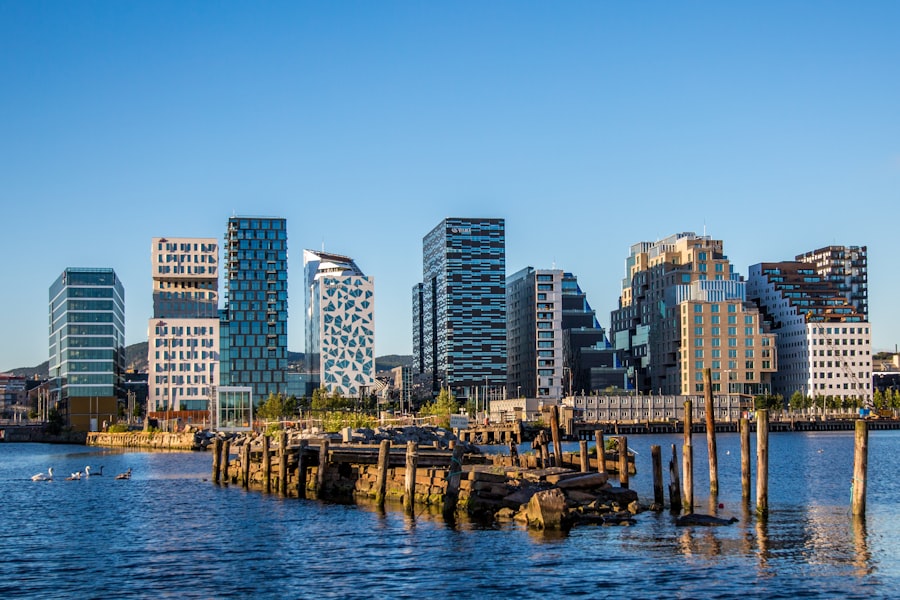Norwegian dialects are a fascinating aspect of the country’s rich linguistic landscape, reflecting the diverse cultural and historical influences that have shaped Norway over centuries. Unlike many languages that have a standardised form, Norwegian is characterised by a multitude of dialects, each with its own unique features and nuances. This diversity is not merely a matter of regional accents; it encompasses variations in vocabulary, grammar, and pronunciation, making the study of Norwegian dialects an intriguing pursuit for linguists and language enthusiasts alike.
The significance of these dialects extends beyond mere communication; they are a vital part of Norway’s identity and heritage. Each dialect carries with it the stories and traditions of the communities that speak it, serving as a living testament to the country’s history. As such, understanding Norwegian dialects offers valuable insights into the cultural fabric of Norway, revealing how geography, history, and social dynamics have influenced the way people speak across different regions. Take the first step. Book a consultation with the Norway Relocation Group for your move to Norway.
Summary
- Norwegian dialects are diverse and varied, reflecting the country’s rich linguistic heritage.
- The history and evolution of Norwegian dialects are influenced by factors such as geography, isolation, and historical events.
- Understanding the different Norwegian dialect groups, such as Eastern, Western, and Northern, is essential for appreciating the nuances of the language.
- Characteristics and features of Norwegian dialects include unique vocabulary, pronunciation, and grammar rules.
- Regional variations in Norwegian dialects highlight the cultural and linguistic diversity within the country.
The History and Evolution of Norwegian Dialects
The evolution of Norwegian dialects can be traced back to the Old Norse language, which was spoken by the Vikings and formed the basis for many modern Scandinavian languages. As Norway became more geographically and politically fragmented over the centuries, distinct dialects began to emerge. The influence of various historical events, such as the union with Denmark and later with Sweden, played a crucial role in shaping the linguistic landscape.
During these periods, the written language was heavily influenced by Danish, leading to a divergence between written and spoken forms. In the 19th century, a national romantic movement sought to revive and promote Norwegian culture and language, leading to a renewed interest in dialects. This period saw the emergence of two written standards: Bokmål, which is based on Danish, and Nynorsk, which draws from rural dialects.
The establishment of these standards further solidified the importance of dialects in Norway’s linguistic identity, as they were seen as a means of preserving local culture and heritage.
Understanding the Different Norwegian Dialect Groups

Norwegian dialects can be broadly categorised into several groups based on geographical regions. The most prominent divisions include Eastern Norwegian, Western Norwegian, Northern Norwegian, and Trøndersk. Each group encompasses a variety of local dialects that can differ significantly from one another.
For instance, Eastern Norwegian dialects are often characterised by their melodic intonation and distinct vowel sounds, while Western Norwegian dialects may exhibit more pronounced consonant clusters. Within these groups, there are also sub-dialects that reflect local variations. For example, the dialect spoken in Oslo is quite different from that of Bergen, despite both being classified under Eastern and Western Norwegian respectively.
This intricate web of dialects illustrates not only the geographical diversity of Norway but also the cultural richness that comes with it. Understanding these groups is essential for anyone looking to grasp the complexities of the Norwegian language.
Characteristics and Features of Norwegian Dialects
One of the most striking features of Norwegian dialects is their phonetic diversity. Pronunciation can vary dramatically even within short distances, leading to distinct sounds that may be challenging for non-native speakers to discern. For example, the pronunciation of certain vowels can differ significantly between dialects, affecting how words are understood.
Additionally, some dialects employ unique grammatical structures or vocabulary that may not be found in standardised forms of Norwegian. Another characteristic is the use of local idioms and expressions that reflect regional culture and history. These idiomatic phrases often carry meanings that are deeply rooted in local traditions and may not translate well into other languages or even other dialects.
This richness adds depth to the language and provides speakers with a sense of belonging to their community. The interplay between these features makes Norwegian dialects not only a means of communication but also a vibrant expression of cultural identity.
Regional Variations in Norwegian Dialects
The regional variations in Norwegian dialects are vast and can be attributed to several factors, including geography, history, and social interactions. For instance, coastal communities often have dialects influenced by maritime culture, while inland areas may reflect agricultural traditions. The rugged terrain of Norway has historically isolated communities from one another, allowing distinct dialects to develop independently.
In addition to geographical influences, social factors such as migration and urbanisation have also played a role in shaping regional dialects. As people move between cities and rural areas, they bring their linguistic habits with them, leading to a blending of dialect features. This dynamic nature of language means that even within a single region, dialects can evolve rapidly over time, reflecting changing social landscapes.
The Influence of Norwegian Dialects on the Norwegian Language

Norwegian dialects have had a profound influence on the development of the Norwegian language as a whole. The existence of multiple dialects has challenged the notion of a singular “correct” way to speak or write Norwegian. Instead, it has fostered an appreciation for linguistic diversity and encouraged speakers to embrace their local forms of expression.
Moreover, dialects have contributed to the richness of vocabulary in Norwegian. Many words and phrases used in everyday conversation stem from regional dialects rather than standardised forms. This linguistic variety enhances communication by allowing speakers to convey nuances that might be lost in more formal language.
As such, dialects play an essential role in keeping the language dynamic and relevant to contemporary society.
How to Identify and Distinguish Norwegian Dialects
Identifying and distinguishing between Norwegian dialects can be both an enjoyable and challenging endeavour. One key aspect is listening for phonetic differences; for example, certain vowel sounds may be pronounced differently depending on the region. Additionally, intonation patterns can vary significantly between dialects, providing further clues about their origins.
Another method for distinguishing dialects is through vocabulary usage. Many regions have unique words or phrases that are not commonly used elsewhere in Norway. Familiarity with these regionalisms can aid in recognising specific dialects when conversing with native speakers or listening to recordings.
Engaging with locals and immersing oneself in different communities can also provide invaluable insights into the subtleties of various dialects.
Common Misconceptions about Norwegian Dialects
Despite their rich diversity, there are several misconceptions surrounding Norwegian dialects that can lead to misunderstandings. One common belief is that all Norwegians speak “perfect” Bokmål or Nynorsk; however, this overlooks the fact that many people primarily communicate in their local dialects. In reality, most Norwegians are bilingual in their dialect and one of the written standards but may prefer to use their dialect in everyday conversation.
Another misconception is that certain dialects are “better” or more prestigious than others. This belief can perpetuate stereotypes and create divisions among speakers. In truth, each dialect has its own value and significance within its community.
Embracing this diversity is crucial for fostering mutual respect among speakers of different dialects.
The Importance of Preserving Norwegian Dialects
Preserving Norwegian dialects is essential for maintaining cultural heritage and identity. As globalisation continues to influence languages worldwide, there is a risk that smaller dialects may become endangered or even extinct. Efforts to document and promote these dialects are vital for ensuring that future generations can appreciate their linguistic heritage.
Moreover, preserving dialects contributes to the overall richness of the Norwegian language. Each dialect encapsulates unique historical narratives and cultural practices that enrich our understanding of Norway’s past and present. By valuing and promoting these linguistic variations, we not only honour our ancestors but also celebrate the vibrant tapestry of contemporary Norwegian society.
Resources for Learning and Studying Norwegian Dialects
For those interested in delving deeper into the world of Norwegian dialects, numerous resources are available to aid in learning and understanding these linguistic variations. Books on Norwegian linguistics often provide comprehensive overviews of different dialect groups and their characteristics. Additionally, online platforms offer audio recordings that allow learners to hear authentic pronunciations from various regions.
Language courses specifically focused on Norwegian dialects can also be invaluable for those seeking immersive experiences. The NLS Norwegian Language School in Oslo offers specialised courses designed to help students navigate the complexities of different dialects while enhancing their overall language skills. With experienced instructors who understand the nuances of regional speech patterns, students can gain practical insights into how to communicate effectively across various contexts.
Embracing the Diversity of Norwegian Dialects
In conclusion, the diversity of Norwegian dialects is a testament to Norway’s rich cultural heritage and linguistic history. Each dialect tells a story about its community’s identity and traditions while contributing to the broader tapestry of the Norwegian language. By understanding and appreciating these variations, we can foster greater respect for linguistic diversity and promote efforts to preserve this invaluable aspect of Norway’s cultural landscape.
As we move forward in an increasingly globalised world, it is crucial to embrace this diversity rather than allow it to fade away. Engaging with resources such as those offered at NLS Norwegian Language School in Oslo can provide learners with essential tools for navigating this complex linguistic terrain while celebrating the unique characteristics that each dialect brings to the table. Ultimately, by valuing our linguistic heritage, we enrich our understanding of ourselves and our connections to one another within this beautiful country.
Learn more about the Norwegian classes at the NLS Norwegian Language School in Oslo

